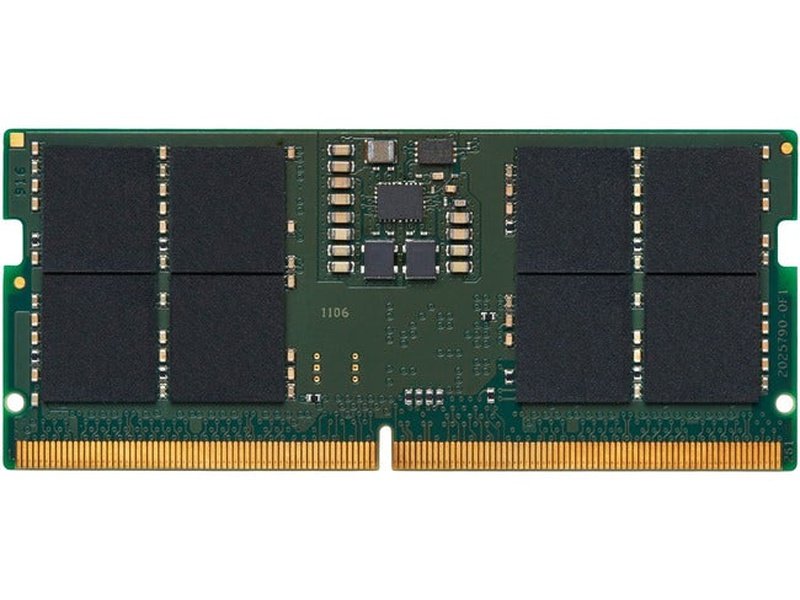Estimate shipping
Greater starting speed performance.
DDR5 debuts at 4800MHz, while DDR4 tops out at 3200MHz. This represents a 50% increase in bandwidth. In cadence with compute platform releases, DDR5 has planned performance increases that will scale to 6400MHz.
Reduced power / increased efficiency.
At 1.1V, DDR5 consumes 20% less power than DDR4 equivalent components at 1.2V. In addition to conserving battery life in laptops, it also has a significant advantage for enterprise servers working around the clock.
PMIC.
DDR5 modules feature on-board Power Management Integrate Circuits (PMIC), which help regulate the power required by the various components of the memory module (DRAM, register, SPD hub, etc). For server-class modules, the PMIC uses 12V; for PC-class modules, it uses 5V. This makes for better power distribution compared to previous generations, improves signal integrity and reduces noise.
SPD hub.
DDR5 utilises a new device that integrates the Serial Presence Detect (SPD) EEPROM with additional hub features, manages access to the external controller and decouples the memory load on the internal bus from external.
DDR5 debuts at 4800MHz, while DDR4 tops out at 3200MHz. This represents a 50% increase in bandwidth. In cadence with compute platform releases, DDR5 has planned performance increases that will scale to 6400MHz.
Reduced power / increased efficiency.
At 1.1V, DDR5 consumes 20% less power than DDR4 equivalent components at 1.2V. In addition to conserving battery life in laptops, it also has a significant advantage for enterprise servers working around the clock.
PMIC.
DDR5 modules feature on-board Power Management Integrate Circuits (PMIC), which help regulate the power required by the various components of the memory module (DRAM, register, SPD hub, etc). For server-class modules, the PMIC uses 12V; for PC-class modules, it uses 5V. This makes for better power distribution compared to previous generations, improves signal integrity and reduces noise.
SPD hub.
DDR5 utilises a new device that integrates the Serial Presence Detect (SPD) EEPROM with additional hub features, manages access to the external controller and decouples the memory load on the internal bus from external.
Specifications
| Memory Capacity | 16GB |
| Module Quantity | 1 Module |
| Speed (Data Rate) | 4800MT/s (PC5-38400) |
| Module Type | SODIMM |
| Error Check | Non-ECC |
| Model/Series/Type | KCP |
| CAS Latency | CL40 |
| Form Factor | DDR5 |
| Rank | 1R (Single Rank) |
| Warranty | Lifetime |
| Pins | 262 Pin |
| Operating Temperature | 0°C to 85°C |
| DRAM Density | 16Gbit |
| Memory Voltage | 1.1v |
| Memory Depth | 2G |
| Product Condition | New |
| Product Type/Family | RAM |
| Packaging Type | Retail |
| Data Width | X64 |
| Chip Organization | x8 |

